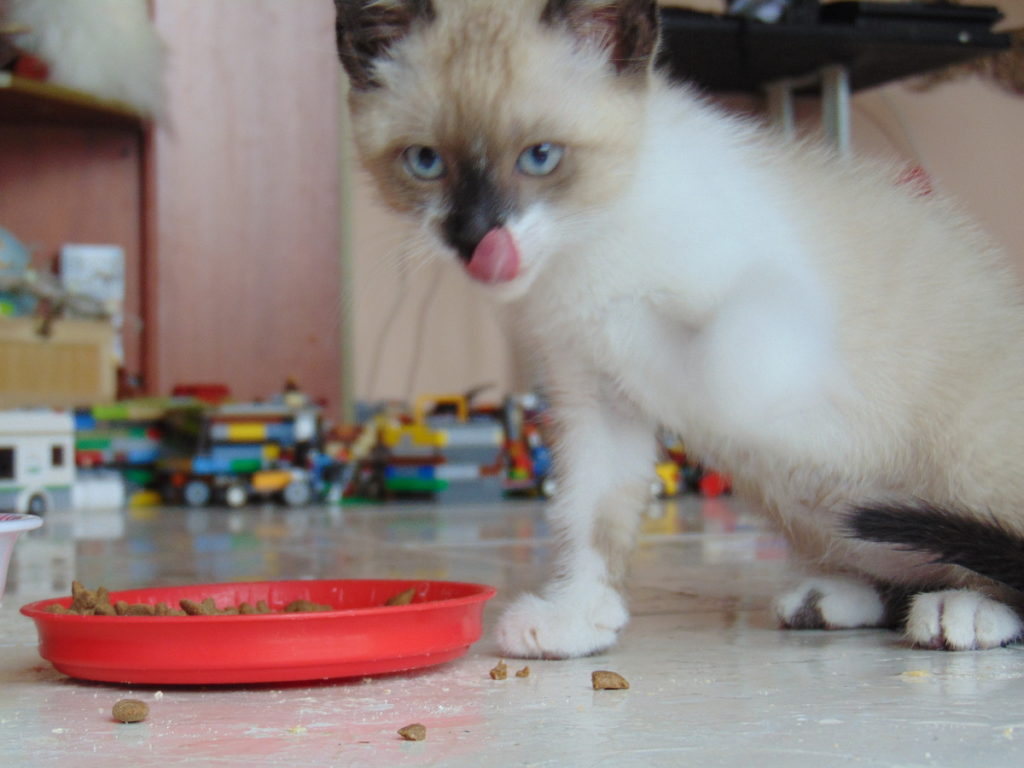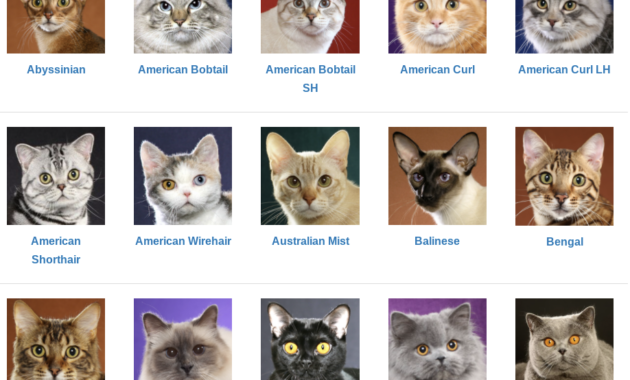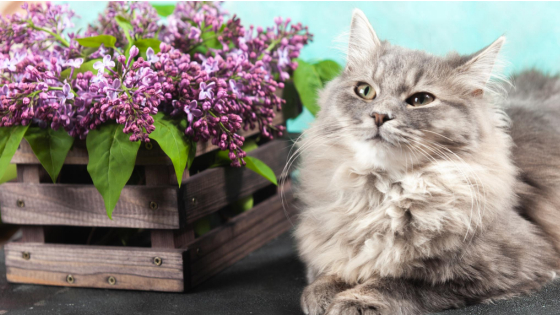
Do you have a hissing cat that seems to be sending mixed signals?
One moment they’re purring in your lap and the next they’re arching their back and emitting a menacing hiss.
It can be confusing and even alarming for cat owners, but fear not!
Your feline friend is simply trying to communicate with you.
Cats are notorious for being independent creatures, but they still rely on communication to express their needs and feelings.
Hissing is just one of the many ways that cats use body language to convey messages.
In this article, we’ll explore what your hissing cat may be saying and how you can decipher their signals to better understand your furry companion.
So, grab a cup of tea, settle in with your kitty, and let’s dive into the world of feline communication.
Understanding Feline Body Language

Understanding feline body language is crucial for cat owners.
Cats don’t communicate like humans, but they do express themselves in many other ways.
One of the most common forms of communication is through meows.
Interpreting meows is not as difficult as it seems.
Each meow has a different meaning, and it’s up to you to understand what your cat is trying to say.
Another way your cat communicates with you is through their tail positions.
Recognizing tail positions can help you determine if your cat is feeling happy, scared or aggressive.
For instance, when a cat’s tail is straight up in the air, it means they are feeling confident and happy.
On the other hand, if their tail is tucked between their legs or twitching rapidly, they might be feeling scared or anxious.
Learning how to interpret feline body language takes time and patience.
But once you’ve mastered it, you’ll be able to understand your cat on a deeper level.
By paying attention to their meows and tail positions, you’ll be able to tell if they need food, water or if something is bothering them.
So start observing your cat today and see what they’re trying to tell you!
SEE ALSO
Can Cats Eat Eggs? Here’s What Experts Recommend
Could Your Cat Have Cancer? Here’s How To Tell
Deciphering The Meaning Of Hissing

The hissing of a cat can be quite alarming to its owners.
It is commonly misunderstood as a sign of aggression, but that may not always be the case.
Cats hiss for many different reasons and it’s important to understand the meaning behind each type of hiss.
Common misconceptions about hissing lead people to believe that it is just a warning to back off.
However, cats also hiss when they are scared or feeling threatened.
This type of hiss is different from the warning hiss and is usually accompanied by arched backs and puffed-up fur.
It’s important to recognize this type of hiss so you can help your cat feel safe again.
There are also other types of hissing such as playful hissing, which is done during playtime, and frustrated hissing when they are trying to communicate something but cannot seem to get their point across.
By understanding these different types of hissing, you can better interpret your cat’s behaviour and respond accordingly.
| Type of Hiss | Meaning |
|---|---|
| Warning Hiss | Back off |
| Scared/Threatened Hiss | Feeling unsafe |
| Playful Hiss | Having fun |
| Frustrated Hiss | Difficulty communicating |
Knowing what your cat is trying to convey through its body language can help strengthen the bond between you two.
Next time you hear a hiss from your furry friend, take a closer look at their body language and see if you can decipher the message they are trying to send without jumping to conclusions about their behaviour.
Remember that every cat has its unique personality and way of communicating, so stay patient and keep an open mind when interacting with them.
Identifying Triggers For Hissing

Recognizing warning signs is crucial in understanding what triggers a cat to his.
Hissing is not a random behaviour; it is the feline’s way of saying, ‘Back off.’
Some common triggers include feeling threatened, fearful, or territorial.
For example, if your cat hisses when you approach them while they are eating, this could be a sign that they feel possessive of their food and want you to stay away.
It’s important to respond appropriately when you recognize these warning signs. Ignoring them could result in aggression from the cat and a potential injury for you or someone else.
Instead of approaching the cat when they’re hissing, give them space and time to calm down.
If your cat is afraid of something specific, like loud noises or strangers, try to minimize their exposure to those triggers.
Remember that every cat has unique triggers that may cause them to hiss.
Pay attention to your cat’s body language and vocalizations; this will help you understand what causes their hissing behaviour.
With patience and care, you can create a safe and comfortable environment for both yourself and your feline friend by recognizing their warning signs and responding appropriately.
Ways To Calm A Hissing Cat
As the popular adage goes, ‘Keep calm and carry on.’ This is especially true when dealing with a hissing cat.
These furry creatures can be easily agitated and may lash out at their owners or anyone who comes too close.
However, there are ways to calm a hissing cat without resorting to drastic measures.
One effective method is through interactive toys.
Cats love to play and having something to focus on can help distract them from their fear or anxiety.
Toys like feather wands or laser pointers can provide hours of entertainment for your feline friend while also keeping them active and engaged.
Another way to soothe a hissing cat is through music. Just like humans, cats can benefit from listening to calming tunes.
Soft classical music or nature sounds can help relax your pet and ease their tension.
You may even notice your cat purring along in contentment.
Remember, calming a hissing cat takes patience and understanding.
By providing interactive toys and soothing music, you can help alleviate their stress and create a peaceful environment for both you and your furry companion.
Strengthening Your Bond With Your Feline Friend
Playing and feeding your cat are just two of the many ways you can strengthen your bond with your feline friend.
Cats love to play, so it’s important to set aside some time every day for interactive playtime.
Whether it’s chasing a toy mouse or batting at a feather wand, playing with your cat will not only help them burn off excess energy but also enhance their physical and mental health.
Feeding time is also an excellent opportunity to connect with your cat.
Instead of simply filling up their food bowl, try hand-feeding them small treats as a way to show affection and build trust.
Additionally, mealtime can be a chance to teach your cat new tricks or behaviours using positive reinforcement training techniques.
Remember that every cat has its unique personality and preferences when it comes to bonding activities.
Some may enjoy snuggling on laps while others prefer solo playtime.
The key is to observe and listen to your cat’s cues and adjust accordingly.
By investing time in building a strong relationship with your furry friend, you’ll create a happy and fulfilling life together without the need for words or hisses.
Frequently Asked Questions
How Can You Tell If A Cat Is About To Hiss?
When interacting with cats, it’s important to pay attention to their body language and vocal cues.
Sometimes, they might show subtle signs that they’re about to hiss.
For example, a cat might flatten its ears or twitch its tail aggressively before letting out a warning hiss.
However, environmental triggers and socialization can also play a role in a cat’s behaviour.
If a cat feels threatened or uncomfortable in its surroundings, it may be more likely to hiss as a defence mechanism.
On the other hand, a well-socialized cat might be less prone to hissing in unfamiliar situations.
Remember – communicating with cats is about understanding their unique personalities and quirks.
As the saying goes, ‘Curiosity killed the cat,’ so always approach feline interactions with caution and respect for their boundaries.
Do All Cats Hiss Or Just Certain Breeds?
Do all cats hiss or just certain breeds?
While some breeds may be more prone to hissing behaviour in feline communication than others, any cat can hiss when feeling threatened or scared.
Common hissing triggers include sudden movements, loud noises, unfamiliar people or animals, and being touched in a way they don’t like.
It’s important to understand that a hissing cat is not necessarily an aggressive cat – it’s simply their way of expressing discomfort and trying to protect themselves.
As a pet owner, it’s essential to respect your cat’s boundaries and avoid escalating the situation further.
By learning how to read your cat’s body language and responding appropriately, you can help prevent negative interactions and strengthen your bond with your furry friend.
Can A Cat’s Hissing Be A Sign Of A Medical Issue?
Sometimes, a hissing cat can be a sign of deeper issues beyond just behavioural reasons.
Signs of medical issues could be a possible cause of your feline’s unusual behaviour.
It’s essential to pay attention to the frequency and severity of their hissing, as it could indicate pain or discomfort that they are unable to communicate otherwise.
As pet owners, we all desire intimacy with our furry friends, which means taking care of them when they need us the most.
So if you notice anything unusual about your cat’s behaviour, don’t hesitate to seek veterinary help – it could be the key to helping your pet feel better in no time!
Is It Possible To Train A Cat Not To Hiss?
Yes, it is possible to train a cat not to hiss!
There are various training techniques and behavioural modification strategies that can help you achieve this goal.
One effective method is positive reinforcement, where you reward your cat for good behaviour with treats or toys.
You can also use deterrents like a hissing sound or a spritz of water when your cat starts to hiss.
Another approach is to redirect your cat’s attention to something else, such as playing with a toy or receiving affection from you.
With patience and consistency, your cat can learn to stop hissing and instead communicate in more peaceful ways.
What Should You Do If Your Cat Hisses At Other Pets In The Household?
Introducing new pets to the household can be a tricky task, and managing aggression between them is crucial. But what if your cat hisses at the other pets?
Don’t take it personally; it’s just their way of saying ‘Hey, I’m not sure about this newcomer.’ It’s important to give your cat time and space to adjust to the new situation.
Slowly introduce the animals while keeping a close eye on their behaviour.
With patience and understanding, you can help your cat feel comfortable and reduce any potential for aggression.
Remember, introducing new pets is like building a relationship; it takes time, effort and communication from both sides.
Conclusion
In conclusion, understanding a cat’s hissing behaviour is key to providing a happy and healthy home for your feline friend.
While not all cats hiss, it is important to recognize the warning signs before an aggressive outburst occurs.
Hissing can also be a sign of underlying medical issues, so it’s always best to consult with a veterinarian if you are unsure.
With patience and positive reinforcement, it is possible to train a cat not to hiss in certain situations.
However, it is important to remember that hissing is a natural form of communication for cats and should not be punished or discouraged entirely.
So, next time your cat starts to hiss, ask yourself: what might they be trying to tell me?
By listening and responding appropriately, you can build a stronger bond with your furry companion.




